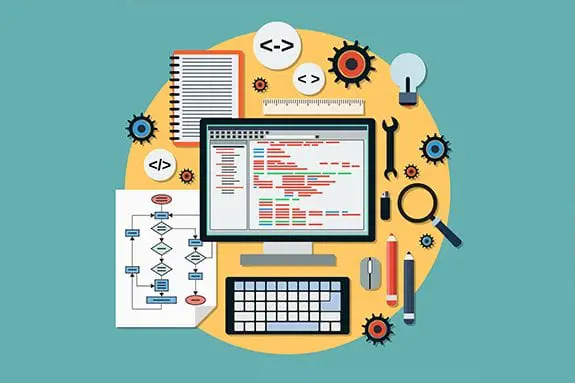

With Google privileging user satisfaction as its key ranking factor, John Wright of adventures.io provides some timely advice on what you can do now to upgrade the UX design of your website and improve performance
This time last year, for the 2016 LAC issue of iGB Affiliate magazine, I wrote an article titled 2016: the year of design. That showcased how important design is for any website and if we look at the top-ranking affiliate sites today, particularly those that were acquired last year, it’s clear the popular sites have strong designers. Even the biggest igaming companies all have their own design teams, which include user experience (UX) designers. My journey over the past five years has taken me on a long, winding road that started with SEO, then led me down the path of conversion rate optimisation (CRO), which in turn then led me to UX design. I haven’t given up on SEO, but I do think too many affiliates and operators put too much emphasis on it and end up making sites more for a search engine than they do for a user. To play devil’s advocate, you don’t need an attractive website for it to be effective. Part of the reason you may see dated sites do well despite looking ugly is because they have quality content, they format their site properly and sometimes that ugly look earns the trust of the user. They don’t feel like they are being sold to by professionals — to them it just feels organic, as in natural. Ideally, you’d have money to be able to invest in a quality UX designer, but you don’t need money to be successful or to have a well-designed website — there are principles you can apply yourself that will make a difference until you’re in a position to outsource this to a specialist.
Whether you’re looking to hire UX help or improve your design yourself, below are some of the most important things to take into consideration.Sketch versus Photoshop For those who use Sketch, I don’t need to say anything further. For designers who are not using sketch or website owners who don’t know what Sketch is, it is the premier design tool for website designers, and many agree Sketch is a superior program to Photoshop. If you’re a website owner who doesn’t do any design work, why should you care about Sketch? Sketch is the new standard of website design and it is a faster tool for creating designs. I can make websites faster in Sketch than I can in Photoshop and once you start using Sketch it is impossible to use Photoshop again to design websites. Sketch is also extremely fast and easy to make website wireframes and layouts with before you apply a design. No doubt there are amazing website designers out there still using Photoshop, but when I know a designer is using Sketch, I know they are an up-to-date designer. I treat it like a filter for talent. As much as I use Sketch as a filter for finding good UX designers, I think by the end of the year more and more designers will be using Sketch. Therefore, using Sketch as a keyword filter for finding talent will become less relevant. One thing to keep in mind is that Sketch is available only for Apple computers (aka Macs) and most likely won’t be available on other operating systems anytime soon. By limiting yourself to only Sketch designers, you would be cutting off a massive part of the world that uses Windows. Many poorer countries have amazing designers that just can’t afford a Mac. Furthermore, Sketch designers are probably going to cost you more than what’s available in the global workforce of Photoshop designers.Tip: When searching for designers or posting a job, mention Sketch as a required skill. You’ll filter out a lot of designers with sub-standard portfolios. Put mobile UX firstJust making a website responsive is not good enough anymore. Even I have been guilty of making a desktop website first, with mobile as an afterthought and telling programmers how things should work on a mobile phone. For most webmasters and operators, mobile can’t be ignored anymore, especially with casinos having three times more mobile players than desktop users. Betting on sports? That should be done on a phone. Lottery tickets? The process of buying a lottery ticket will be mainly a mobile thing. Knowing how important mobile is, it is important to map out the entire user experience for mobile users and put more emphasis on your mobile design than you do for your desktop design. With design tools like Sketch, it makes it much easier to have your mobile designs alongside the desktop version — so your only excuse for not doing mobile wireframes and designs would be laziness.If you want to take your mobile user experience to the next level, you can prototype the entire experience with one of the numerous prototyping tools that exist. Although these are tools I haven’t used yet, I have seen them touted as critical tools for mobile design and for creating layouts. These tools have come out of nowhere and they make mapping out your wireframe, layout and testing faster than previously possible. You could save your designers and programmers a lot of time by being able to provide an answer to how your entire mobile user experience should be. One tool that is receiving a lot of praise is proto.io.Typography mattersYou may wonder if typography is really that important. It is more important than you think and affects everything you do every day, including reading this article. Typography covers the choice of font, font colour, font size, typeface, line spacing and even line length. Imagine if everything you read had ONLY this choice of font. You’d struggle to read emails, do anything on your phone and have problems driving or finding your way through London. If you start adjusting all of these aspects of your CSS for your website, you will definitely influence your website metrics such as bounce rate, time on site and pages per visitor. The reality is there are many website designers who don’t understand the rules of typography and don’t have any knowledge of how it can positively or negatively influence a website. When hiring a designer, it’s a good idea to ask if they include in their designs or have examples of typography UI kit in their portfolio. If they don’t have a good answer on their typography preferences, it means they probably haven’t studied it or don’t care enough about it. Some examples of typography that will negatively impact your website include too many types of fonts used, too light of a font on a white background, similar fonts and backgrounds with too little contrast, and line spacing that is too large or too small. To learn a bit more about typography check the Wikipedia (https://en.wikipedia. org/wiki/Typography) page for it, which ironically enough is one of the best examples of typography that everyone takes for granted.Tip: When hiring a designer, ask if they include in their designs or have examples of typography UI kit in their portfolio. If they don’t have a good answer on their typography preferences, it means they probably haven’t studied it let alone care for it.- Headlines
- Images or video
- Bold, italics and underline
- Internal links
- List
- Non responsive websites
- Slow loading websites
- Sites with thin content
- Fresh designs
- Fast loading websites
- Enhanced content
